[Updated] AZ-104: Microsoft Azure Administrator
Administer Azure Virtual Machines
Creating VMs
Deploying a virtual machine (VM) in Azure involves several steps that are carefully organized into distinct sections for clarity and ease of management. This guide covers the basics of configuring a VM using both the Azure Portal and command-line tools, ensuring you have all the necessary details for effective deployment.
VM Basics
Before you begin, you need to specify the following details:
- Subscription Details & Resource Group: Define which subscription and resource group will host your VM.
- Region: Choose the regional data center where your VM will be deployed.
- VM Name & Image: Provide a unique name and select a VM image (operating system) to run.
- Size & Disk Configuration:
- The size should match your application's performance and scalability requirements.
- Configure the disk settings to choose between SSDs or HDDs, set the desired disk size, and add additional data disks if necessary.

Networking Configuration
Within the networking section, you can:
- Select your virtual network and the specific subnet for the VM.
- Configure associated network security groups (NSG), load balancers, and public IP settings.
This configuration ensures that your VM is both reachable and secure.
Management Options
The management section offers additional configurations:
- Monitoring: Set up monitoring to keep track of your VM’s performance.
- Diagnostics: Send diagnostics information to a storage account for analysis.
- Microsoft Entra ID (Azure AD): Integrate for streamlined login and identity management.
- Backup & Auto Shutdown: Configure backups and scheduled shutdowns to optimize cost control, especially useful during testing.
Note
For optimal cost management, always review the auto shutdown and backup options when configuring your VM.
Creating VMs Using Command-Line Tools
You can create a VM using either Azure PowerShell or the Azure CLI. Both methods allow you to configure your resource details from scratch.
Using Azure PowerShell
Run the following command to create a VM with the necessary resource parameters:
PS > New-AzVm `
-ResourceGroupName "web-rg" `
-Name "vm-01" `
-Location "East US" `
-VirtualNetworkName "vm-01-vnet" `
-SubnetName "default" `
-SecurityGroupName "vm-01-nsg" `
-PublicIpAddressName "vm-01-pip"
Using Azure CLI
Alternatively, use the Azure CLI with this command:
$ az vm create \
--name vm-01 \
--resource-group web-rg \
--image UbuntuLTS \
--location EastUS2 \
--admin-username adminuser \
--admin-password Pa$$w0rd1234
Deploying a VM via the Azure Portal
Follow these steps to deploy a VM using the Azure Portal:
Navigate and Initiate Creation:
Open the "Virtual Machines" blade, click "Create," and select "Azure Virtual Machine."Set Up Basics:
- In the Basics tab, select your subscription and resource group (or create a new one, e.g., "azvm01rg").
- Enter a VM name (e.g., "azvm01") and choose the region.
- For availability, select "No infrastructure redundancy required" if applicable.
- Choose the security type as "Standard VMs" to avoid unnecessary configurations like trusted machines if not needed.
Select the OS Image and Size:
- Under the Image section, pick your preferred operating system (e.g., Ubuntu 22.04 for a Linux environment).
- Click "See all sizes" in the Size section. Use filters (e.g., general purpose) to choose an appropriate size, such as the B1S for a cost-effective instance.

Configure Authentication and Inbound Ports:
- Set the administrative credentials, choosing a robust password and username.
- Under the Inbound ports section, select the necessary ports (HTTP, HTTPS, or SSH) based on your requirements.
Disk Configuration:
- In the Disk tab, choose the disk type (e.g., Standard SSD) and specify the disk size (e.g., 30 GB).
- Optionally, add more data disks as needed.
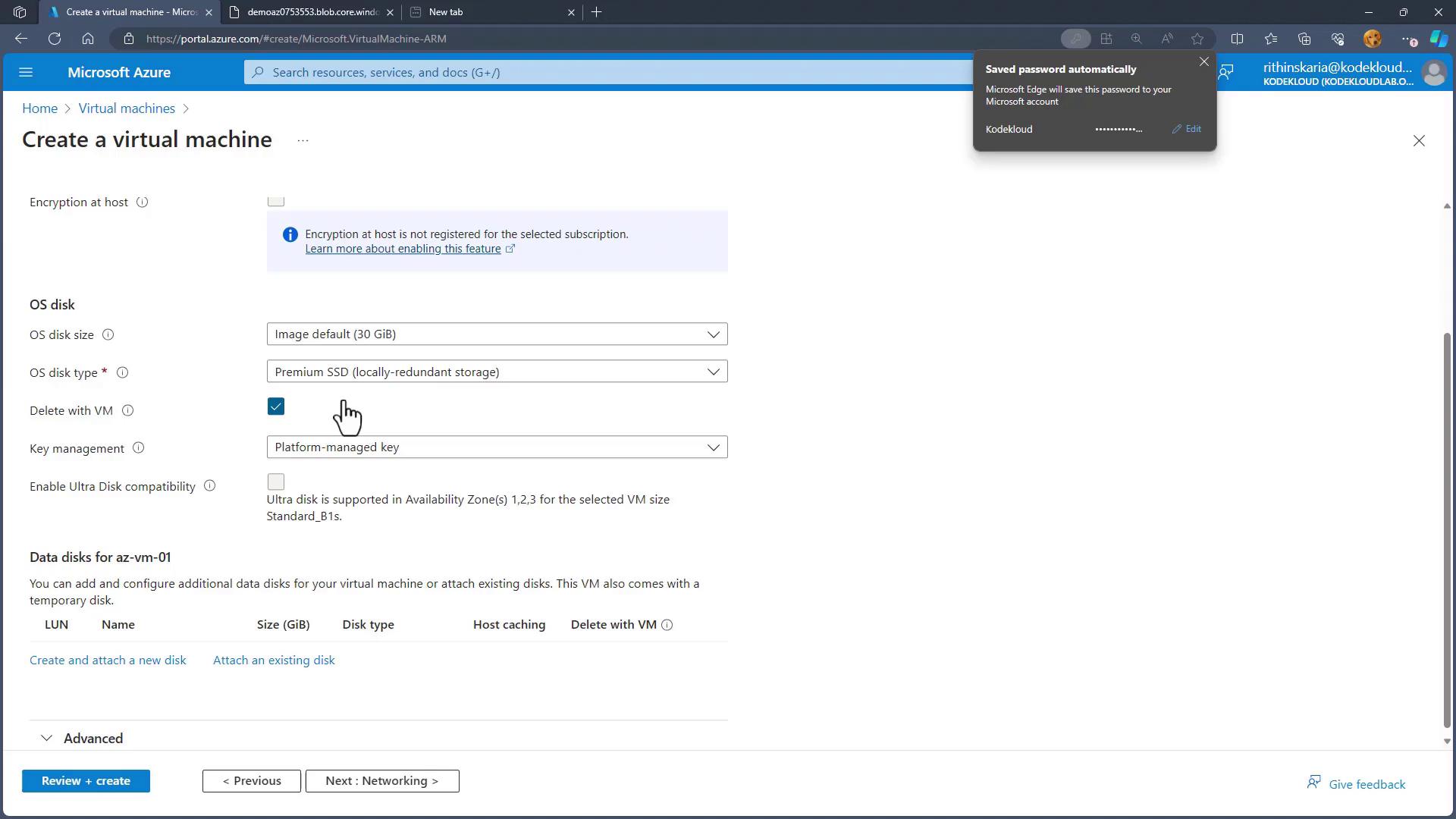
- Networking Configuration:
- Under the Networking tab, either select an existing virtual network or create a new one.
- Configure the public IP and associate a network security group (NSG) appropriately.
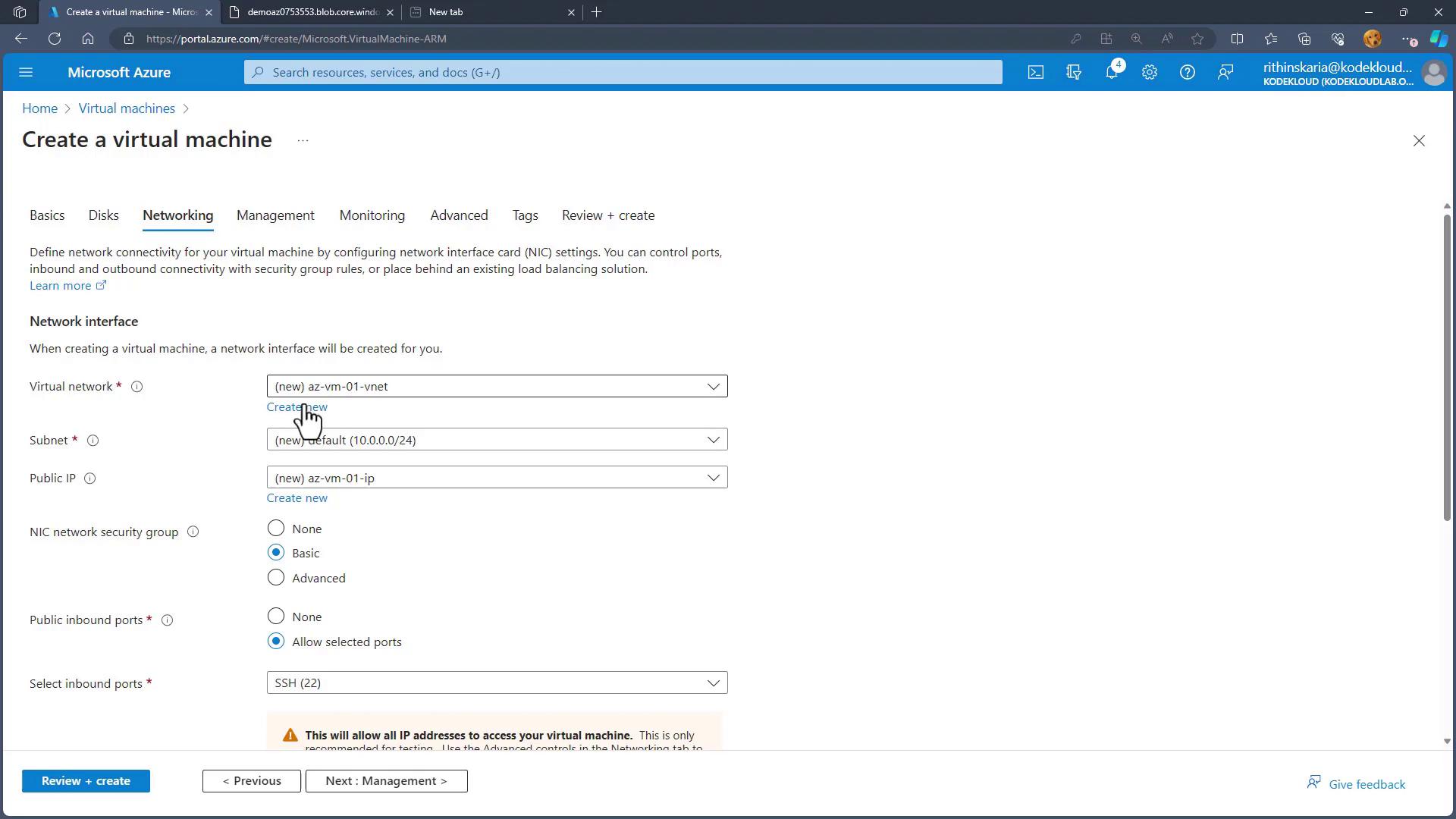
- Management Settings:
Configure options including Defender for Cloud, managed identities, Azure AD login, auto shutdown, backup, and monitoring (alerts, diagnostics, and health monitoring).
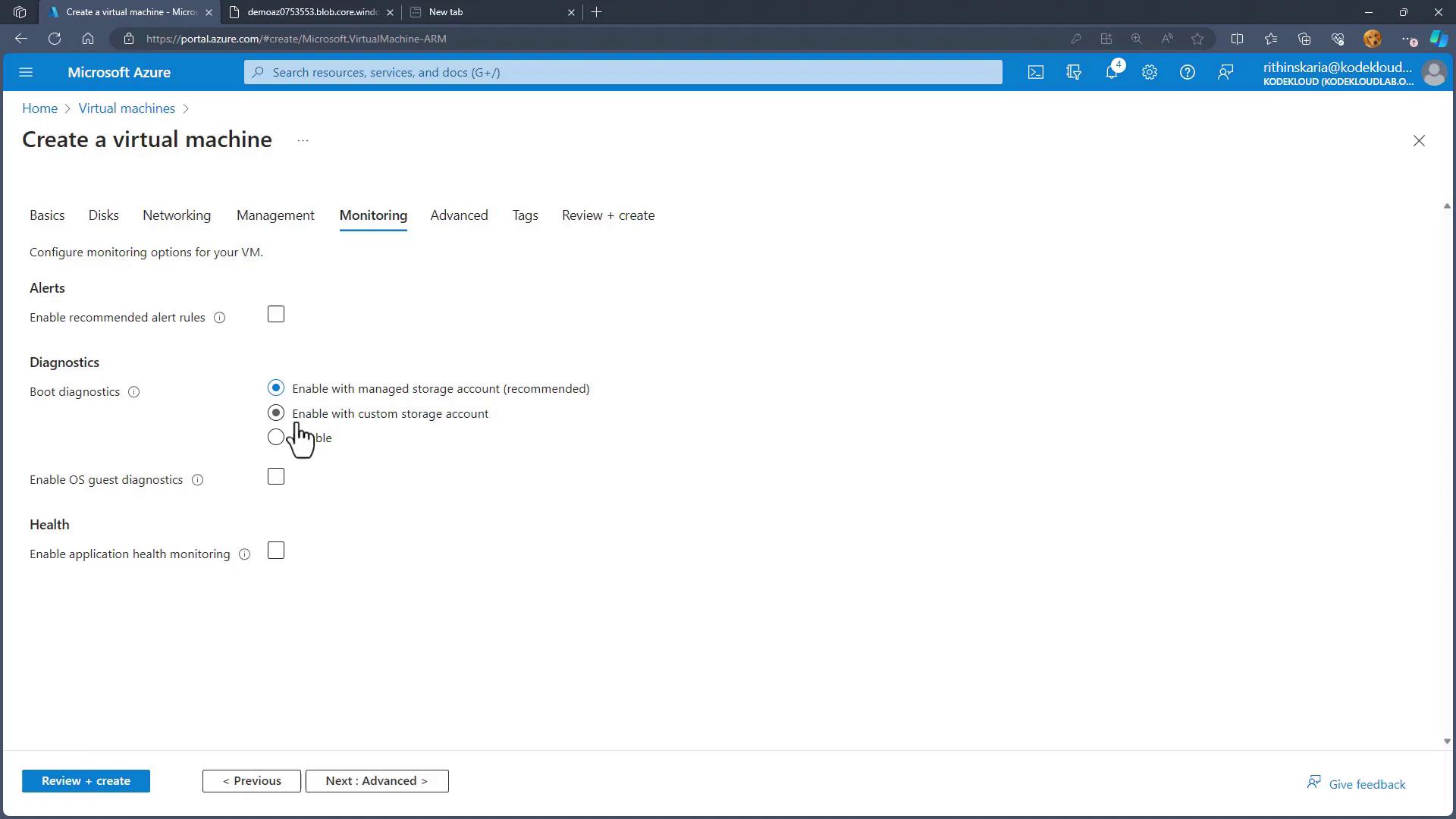
- Advanced Configuration:
Use the Advanced tab to set up extensions for post-deployment configuration and automation.
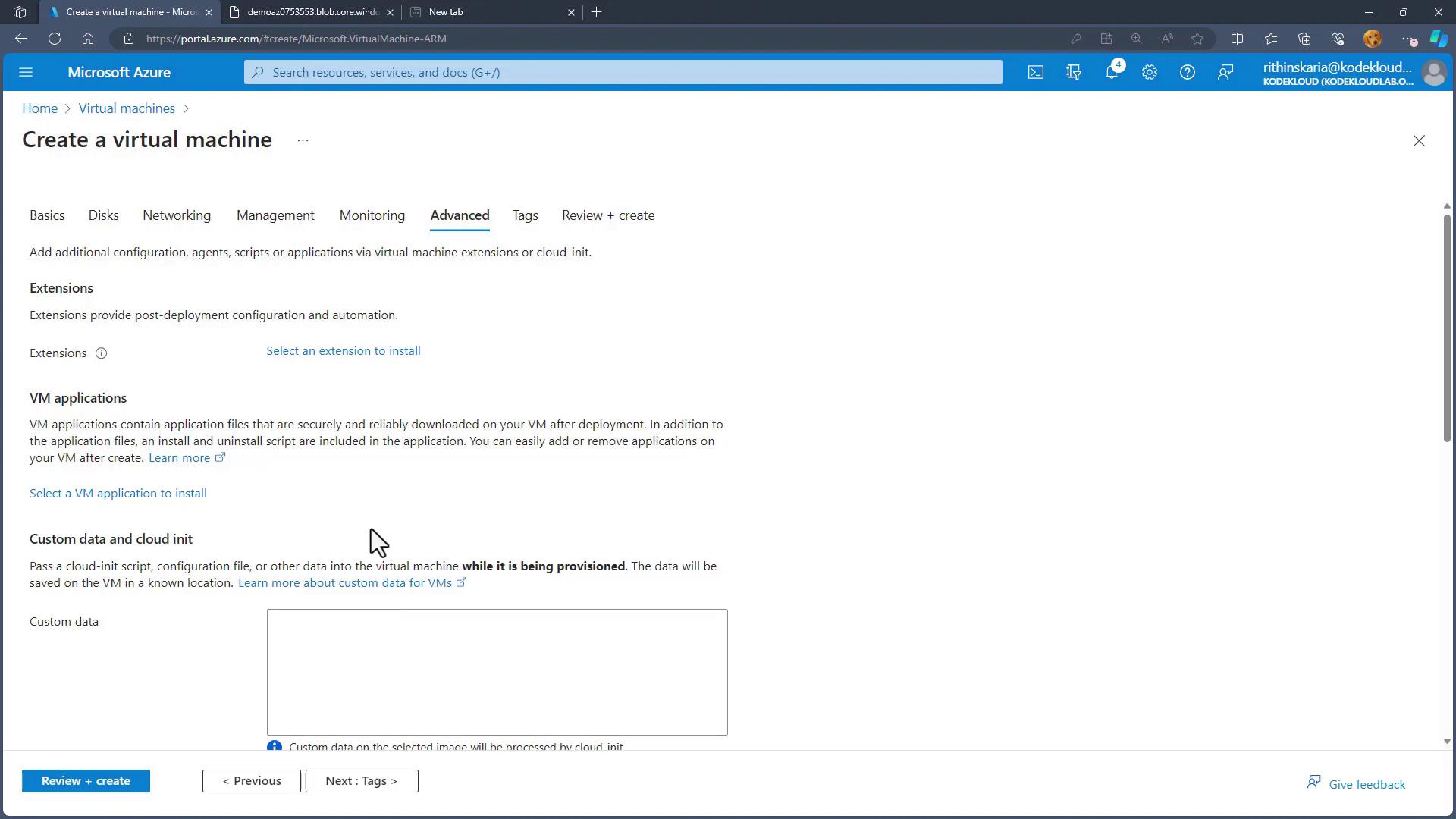
- Finalize and Create:
- Optionally, add tags to your VM for better organization.
- Click "Review + create," then "Create" once validation passes.
After deployment, you can access your VM using a terminal or remote access tool.
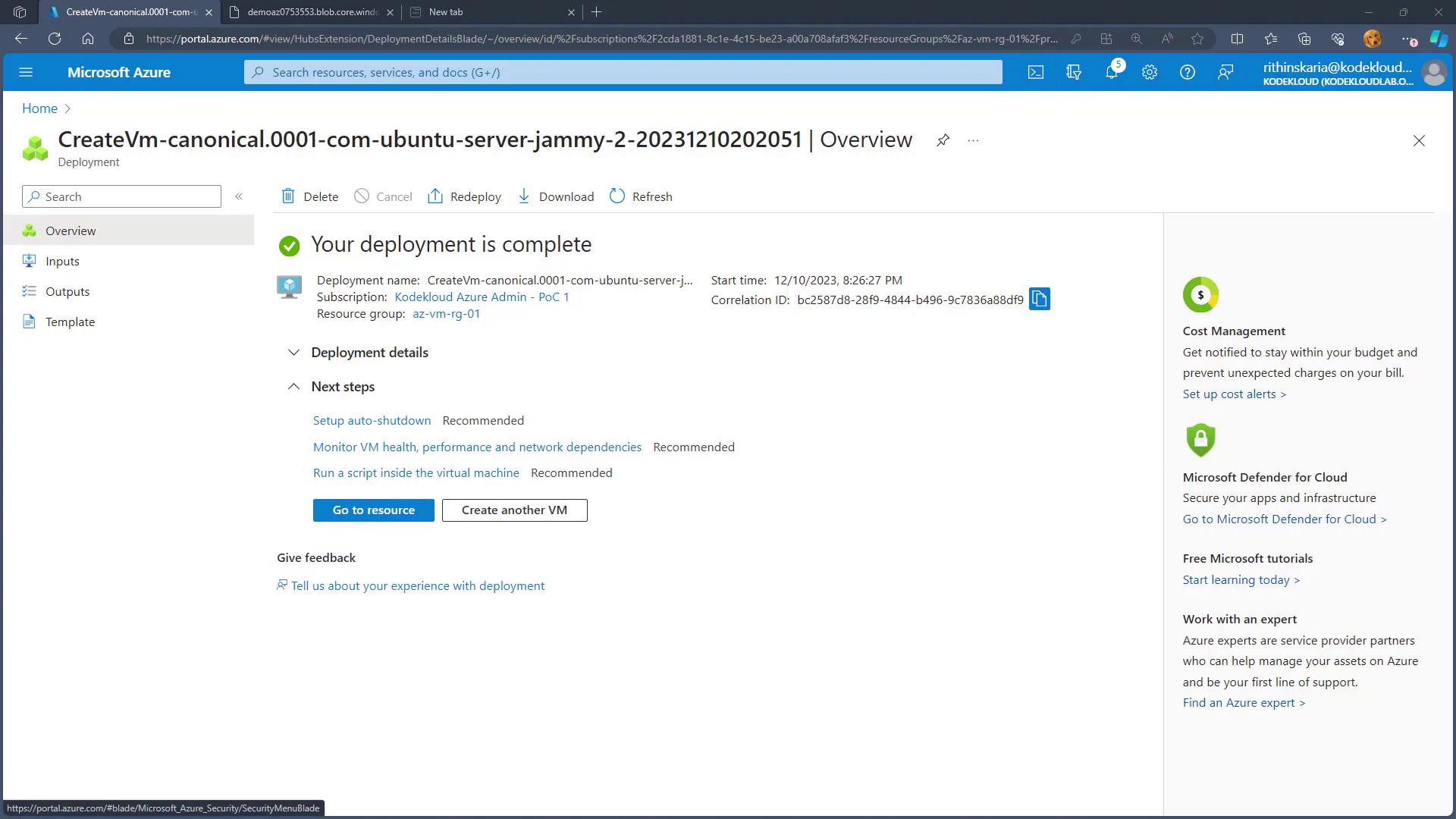
Connecting to Your Deployed VM
Once the VM is running, connect using your preferred remote access method:
- Linux VMs: Typically accessed via SSH.
- Windows VMs: Access using Remote Desktop Protocol (RDP).
You can use Cloud Shell or a locally installed version of PowerShell/Azure CLI for further management tasks.
Quick Tip
Remember to update your firewall rules or NSG configurations to allow the required inbound connections.
This guide has provided a step-by-step walkthrough for deploying a VM in Azure using both the Portal and command-line tools. With your VM now in place, you can focus on installing applications and configuring additional services as needed.
For further reading and more advanced configurations, visit the Azure Documentation.
Watch Video
Watch video content
Practice Lab
Practice lab